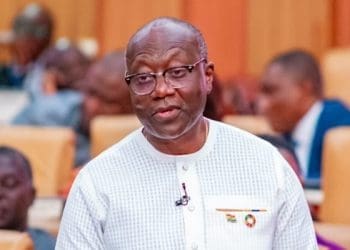President John Dramani Mahama and his recent assurance that the newly introduced GH₵1 fuel levy would not lead to an immediate rise in fuel prices at the pump have proven to be false, prompting widespread public outcry and raising serious questions about the quality of advice provided to the presidency.
Speaking on Wednesday, June 4, 2025, at the Jubilee House when the National Economic Dialogue Committee presented its final report, President Mahama confidently stated: “With the recent gains in macro stability and the strengthening of the Ghana cedi, this levy is not expected to result in immediate fuel price increases at the pump.”
Barely six weeks later, however, fuel prices have shot up by nearly 10%, coinciding directly with the implementation of the GH₵1 per litre levy under the Energy Sector Levies (Amendment) Act, 2025 (Act 1141).
The levy came into effect on Wednesday, July 16, 2025, triggering sharp price increases across multiple oil marketing companies (OMCs).
Price surge contradicts presidential assurance
New pump prices from major fuel stations show a significant jump compared to the last pricing window, between July 2 and 15.
StarOil
StarOil, for instance, increased its petrol price from GH₵10.99 to GH₵12.59 per litre, while diesel went from GH₵12.99 to GH₵13.99. Its premium RON fuel also rose from GH₵13.99 to GH₵14.99.
GOIL
At GOIL, the state-owned fuel retailer, petrol now sells at GH₵12.88, up from GH₵12.07. Diesel rose sharply from GH₵13.20 to GH₵14.38, while Super XP 95 increased from GH₵14.34 to GH₵15.77 per litre.
Shell
Shell, operated by Vivo Energy Ghana, also revised its prices significantly. Petrol moved from GH₵12.08 to GH₵13.29, diesel from GH₵13.25 to GH₵14.49, and Shell’s V-Power fuel from GH₵14.25 to GH₵15.29.
Across all these major providers, the price increases average between 8% and 10%, with the GH₵1 levy being cited as the primary driver of the hike.
Public confidence shaken
The sudden spike in fuel prices has left many Ghanaians questioning the credibility of official assurances.
President Mahama’s declaration that macroeconomic gains—such as cedi stability—would cushion fuel prices appears disconnected from the current market reality.
Consumers, already struggling with the high cost of living, are now bracing for further economic pressures.
Transport operators have begun threatening a 30% increase in fares to reflect the new fuel costs, a move likely to worsen the burden on commuters and low-income households.
Businesses, particularly those in logistics and manufacturing, are also expected to pass on the higher costs to consumers, leading to price hikes across goods and services.
Who ill-advised the President?
The developments have sparked an important question at the heart of policy integrity: Who misled or ill-advised President Mahama into publicly asserting that the levy would not result in immediate price increases?
Did the Ministry of Finance, the Ministry of Energy and Green Transition or the National Petroleum Authority underestimate the responsiveness of the pricing window and the weight of global price pressures?
Or was it a political miscalculation aimed at cushioning the public backlash before the levy took effect?
While the presidency has yet to address the discrepancy between the assurance and the reality on the ground, the fallout is beginning to erode trust in economic messaging from the government.
Energy sector debts vs. daily struggles
The government has defended the levy as a necessary tool to stabilise the power sector.
The Energy Sector Levies (Amendment) Act, 2025—popularly dubbed the ‘Dumsor Levy’ by critics—is expected to raise GH₵5.7 billion annually.
These funds are earmarked for paying down energy sector debts and supporting state-owned power companies.
Yet, this long-term objective is clashing with short-term hardships.
Many Ghanaians say they are being forced to bear the weight of past policy failures and mismanagement in the energy sector.
In their view, the levy is another example of how the state continues to shift fiscal burdens onto citizens without sufficient safeguards or impact mitigation strategies.
Mounting discontent across society
Public reaction has been swift and scathing. On social media and at fuel stations across the country, citizens are voicing deep frustration at what they see as another broken promise.
For many, the real cost of the GH₵1 levy extends beyond the pump—it is showing up in food prices, transport fares, and the cost of doing business.
Economists warn that unless swiftly addressed, the situation could spiral into broader inflationary pressures that undermine the macroeconomic stability the government touts.
Already, inflationary expectations are rising, with price-sensitive sectors anticipating further cost hikes in the coming weeks.
The fuel levy, intended to stabilise one sector, has destabilised many lives—and the public wants answers.











